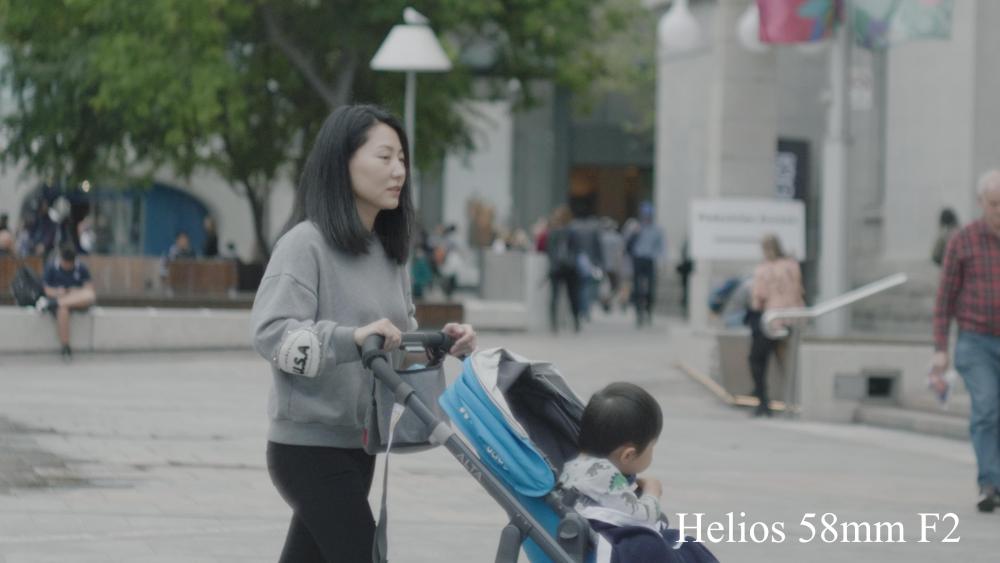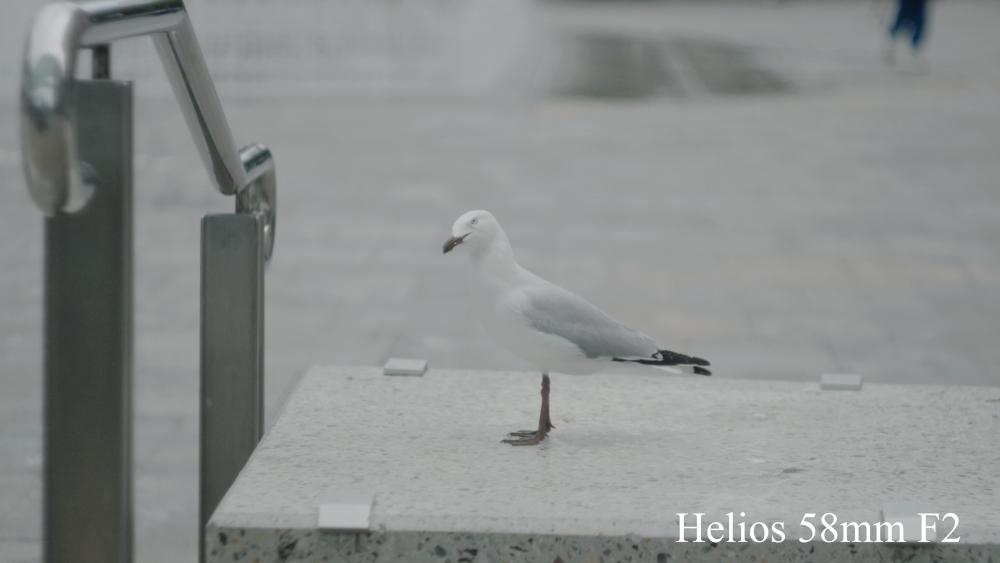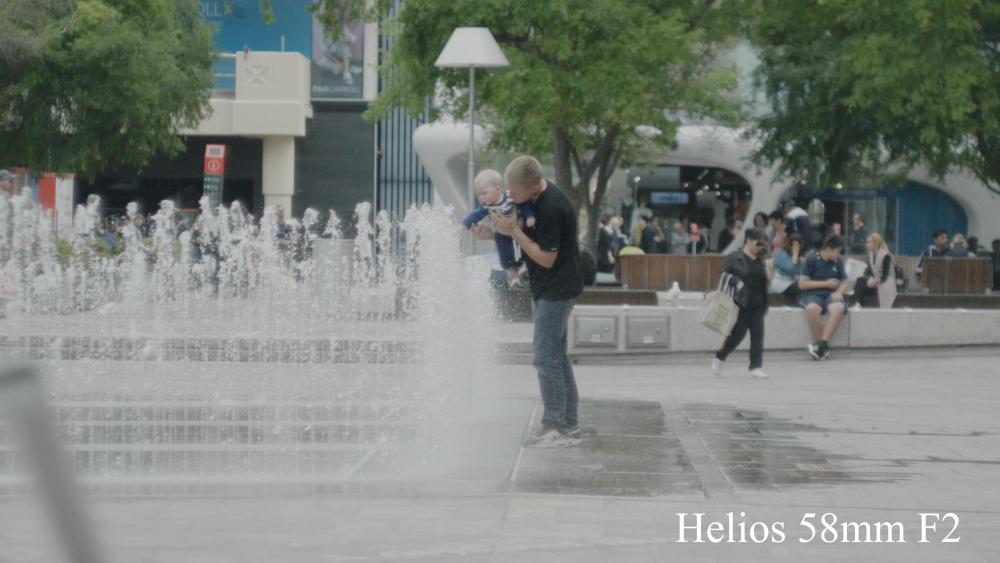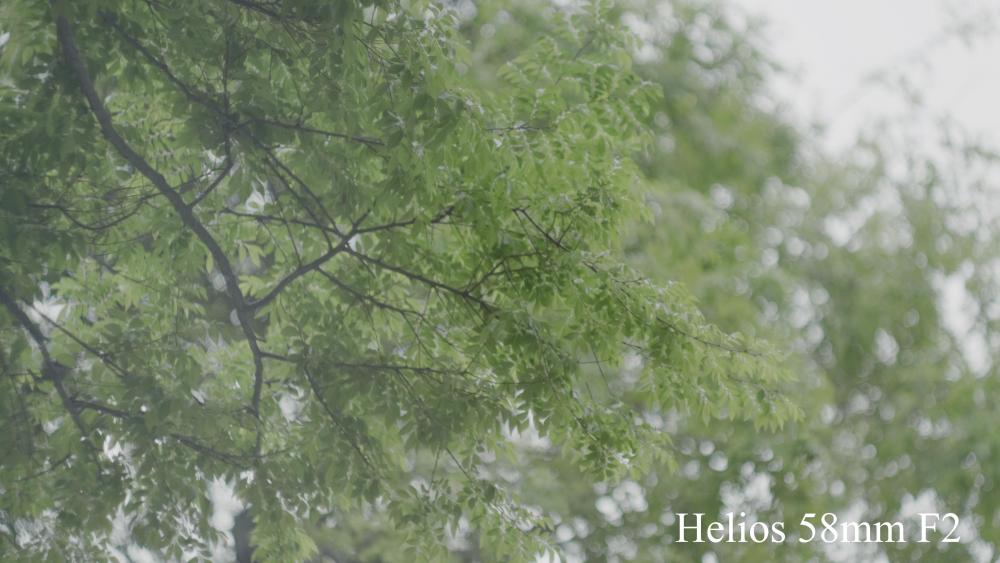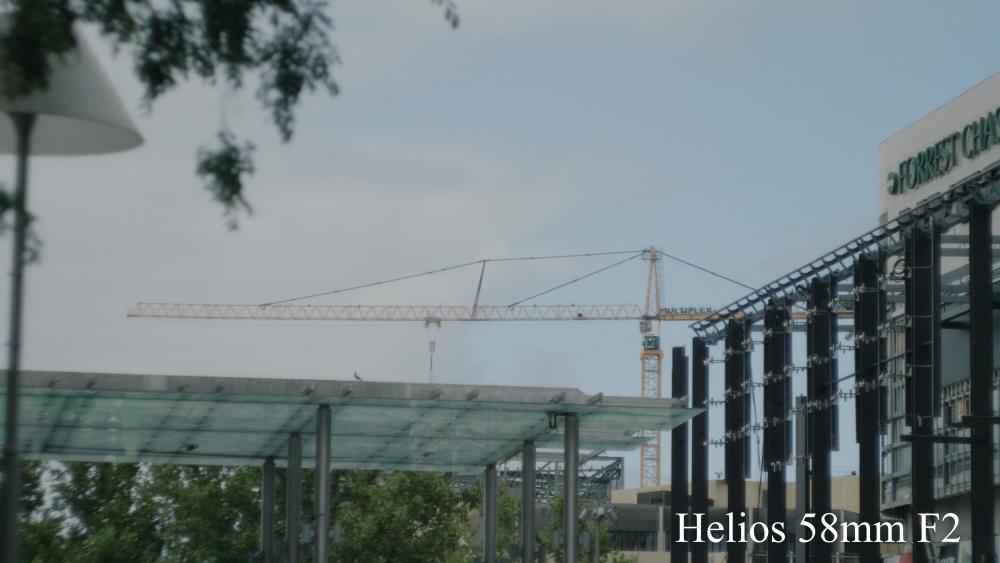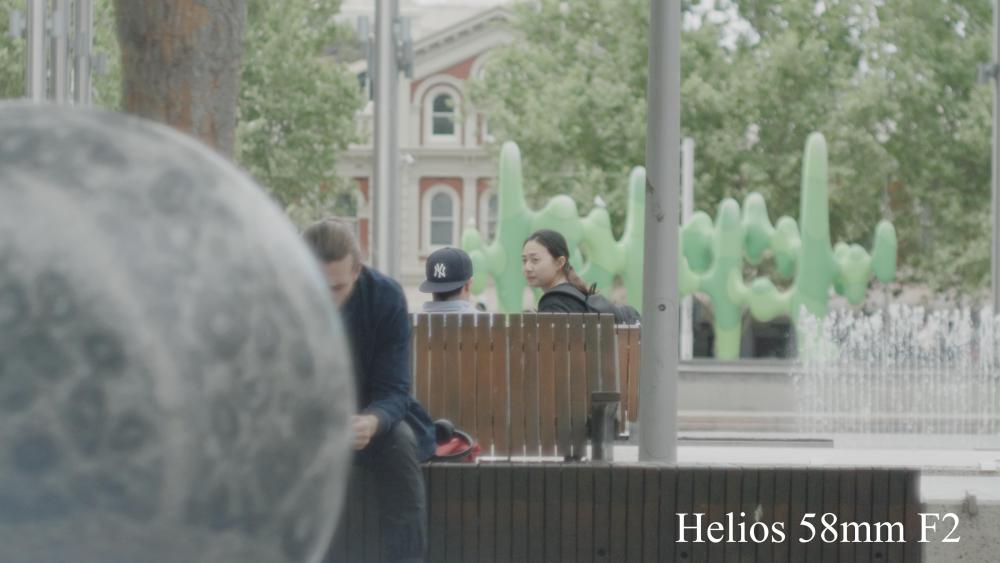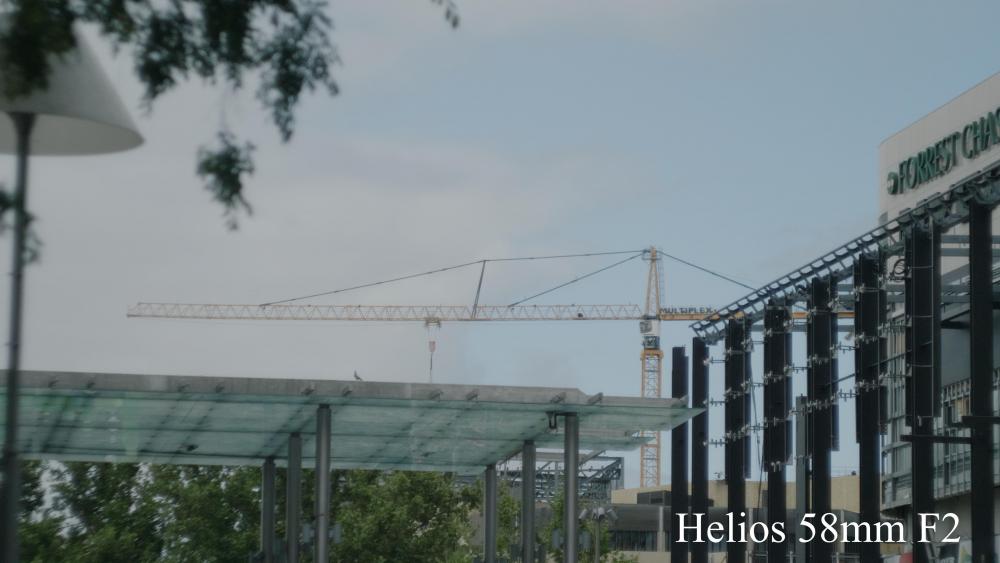-
Posts
7,835 -
Joined
-
Last visited
Content Type
Profiles
Forums
Articles
Everything posted by kye
-

Any recommendations to properly learn correction/grading?
kye replied to Gregormannschaft's topic in Cameras
Have a search on LiftGammaGain.com where the professional colourists hang out - I've seen lots of threads where they give their training recommendations. I'd suggest that you get a course that helps you with the part of grading that you aren't strong in. ie: what the dials and knobs do (eg, how to make qualifiers, use tracking, etc) what the aesthetic implications are for the various effects (eg, warmer colours are happier, etc) what aesthetics do for story and perception (eg, when to pop the colours and when not to) You need all of these to be a good colourist. No point knowing exactly how to make footage look happy but doing it on horror films. -
There are three levels of background blur... subject in front of in-focus background (less 3D appearance - use this when the background is part of the subject) subject in front of slightly blurred but still discernible background (natural 3D appearance - use when background is relevant but not the subject) subject in front of very blurred and obscured background (unnatural appearance - use when background is distracting or competes with the subject or when you want an unnatural aesthetic) As @Mattias Burling says, very wider apertures are required to get slight background blur on subjects that are further away from the camera, or where the background is close to the subject.
-
I'd highly recommend it. If nothing else, the ability to do localised adjustments as well as global adjustments is completely night and day with what results you can achieve. The free version of Resolve is like Photoshop without layers.
-
Another great video - you are killing it! Like last time, I'm not sure what to ask for except that if you talk about film-making and don't talk about camera settings then it'll be great
-
If you stick with the concept that BM makes cinema cameras, then I can't think of any logical set of features that would fit the pricing gap in the lineup, unless it was to cannibalise the Ursa. As a small company with limited product development capabilities (and a serious expectation to support and improve the camera that people haven't even received yet) I'd say that they wouldn't be about to release anything else. At the point they start committing to any type of spec for the next one: They'd really want to understand what the raft of FF mirrorless cameras will do to the market They'd want to understand how well BRAW is doing in the market It would probably be 8K As a company that makes cinema cameras, there isn't a logical unmet need in the middle of their range, but there is one above their range. People talk about how BM colour science is right up there with ARRI, and if they really think big, then taking their industry knowledge they'd go really big. Making an 8K BRAW Super URSA for mid-level cinema camera money would do for the top end what the BMPCC v1 and v2 did for 1080 RAW and 4K RAW. I'm now sure how many people on here are that familiar with what the top of the industry looks like and how far into the stratosphere it goes? For example, Resolve goes right to the state of the art with colour, and in that arena its competitors are things like Baselight, which I'm not sure I've heard anyone here even mention, so they're not just about bringing normal cinema tech down in price, they're also playing well above that.
-
Yes, the company responsible for building the GH line of cameras, which is famous for pushing leading edge technology at this price point, couldn't possibly make a camera that has the RAW capabilities of a $1300 camera just released, for only three times the price. That is completely beyond comprehension!
-
..and the power consumption of the magnetic lock on the battery door would explain the battery life!! ???
-

Panasonic announcing a full frame camera on Sept. 25???
kye replied to Trek of Joy's topic in Cameras
I'm not so sure. That interview with the Panasonic exec gave me the impression that they held of going to FF more because they were intimidated by CaNikon rather than it being technically superior in some fundamental way. And even if they got into 4/3 because it wasn't what pros use, by cramming their m43 cameras with as much tech as possible over and over again, it attracted the lenses the system was missing, and now has an excellent reputation. The lens lineup is still lacking the holy trinity of lenses (16-24, 24-70 and 70-200 F2.8 equivalent zooms) that pro photogs want, but for video with primes its got an excellent range, plus a decent size advantage with fast glass. -
Well thank f*ck for that... I was wondering if I was EVER going to be able to record 16K time lapse videos!!
-
+1 for 4K video downloader. Its the one with the green circle and a white cloud in it. I've been using it for years to download videos so that I could watch them without getting constant interruptions (despite lightening fast internet). I don't think you have to pay? Although I think the free version has some restrictions like playlists can't be longer than a certain size, but you can copy/paste each video URL in there and DL them that way.
-
As clueless as companies may seem when users are feeling real pain like this, behind the scenes I suspect they know full well what is going on and how their users are being effected. I suspect that they have been forced to take up these measures by the MPAA / RIAA / copyright holding thugs and aren't doing more to handle it better because they can't afford it and are likely fighting to keep the doors open. The internet is the first time in human history that we've had to deal with a situation where someone gaining something didn't mean someone else losing something, and it just doesn't fit with any of our previous understanding of ownership. "You wouldn't steal a car" simply isn't the same as copying something. At the heart of this whole mess is the record labels who are basically a dying industry. We still have content producers and content consumers and in the past you needed a middle-man to connect these two, and that was the entire system of record labels and record shops, and because they had a monopoly over the situation they basically took all the profit (artists in the top ten used to get less than $0.50 per album sale and that was considered a good deal, I have no idea what it is like now, and bands that weren't in the charts would have to gig to put food on the table) but now thanks to the internet and social media we simply don't need them anymore and they're fighting to stay alive and unfortunately they're fighting to keep the industry from changing instead of moving with the times and they're using their vast resources (that they basically stole from artists) to bully governments and people like Vimeo into complete submission. They're even in danger of violating one of the basic tenets of civilised society by changing the law from innocent-until-proven-guilty into guilty-until-proven-innocent. This is why companies like Vimeo are experiencing this kind of thing. Had they focused on enforcement through supporting legitimate use then we would have some kind of system where you'd buy a license for a song, get a code, put it in your video upload, and everyone would know you were legit. That kind of thing is dead-easy to implement. Unfortunately, they think that everyone is their enemy and will basically fight until they're on top, even if that makes them emperor of the ashes. It's a tough situation regardless of how you look at it.
-
Now I have a question! Would these two workflows provide the same colour and gamut? ARRI Alexa recording in LogC -> standard LogC to Rec709 conversion GH5 in HLG -> HLG (Pre) LUT -> Main LUT If so, then in theory these two would also be the same: ARRI Alexa recording in LogC -> LogC to Rec709 conversion via a film conversion LUT in Resolve GH5 in HLG -> HLG (Pre) LUT -> Main LUT -> Rec709 to LogC conversion -> LogC to Rec709 conversion via a film conversion LUT in Resolve Or have a missed something? There are a bunch of LUTs that expect a LogC input and this seems like the best way to get a LogC output while still maintaining the Alexa 'look'. I am not an expert, but the AF is the weak point of the GH5. It depends on how you use it (Single AF is fine, it's the continuous AF that's not always reliable). My understanding is that the colour science is fine, but this is something that is very subjective and you might be looking for something specific. I'd look for yourself and make sure you're happy with it. Having said that, I have both an XC10 (which shoots 8-bit 305Mbps C-Log) and a GH5, so if you want me to film something with both then I can send you a frame SOOC for you to grade and compare if you really want to examine the colour science yourself.
-
I agree, and you can definitely over-do things. I shoot hand-held for my home and travel videos but the shots I tend to create in the edit are locked off shots, pans, tilts, or maybe a slider shot to reveal something or add movement. Sometimes they are hand-held because I'm following a person or whatever, but I try and stick to the normal shots because I want the video to be about what I'm pointing the camera at, not the film-making techniques. Stabilising things is great, but ultimately if it's wrong for your project then it's wrong, regardless of how technically impressive it is.
-
I'm with you - there's a reason I'm behind the camera! I watched a 10-hour BTS of a wedding videographer editing a wedding video (10 hours because it was start to finish) and he was just kind of talking through what he was doing, almost thinking out loud, and that mini-scene thing was one of the many nuggets that I got from that. I tend to think of it like little stories joined up for bigger stories joined up to make one large story. I'm not very good at it, but for one of my home travel videos of a family trip I might select the most interesting or photogenic places or activities that we did, then break each one down into the key parts of it (we arrived, we looked around, we climbed up to the lookout, we climbed down again, we discovered our shoes were all dirty.. or whatever!) then for each on of those I make sure that it tells a little story with a few shots. Of course, I have the advantage that the story in my videos is about what happened and so I cut in basically the order that things happened in, whereas with a travel film about a place then you can mix and match shots and things get a lot more complicated in the edit room.
-
The adapters like the one I linked to are just a tube with two lens mounts on each end. Maybe I'm missing something but I don't think that will damage the lens? I have heard about the rear element in a lens hitting the lens element in a Speedbooster, so maybe that's what people are referring to, but I really don't know. I'm sure someone else here will have the answers
-
Thanks! Yeah, I got a Fotga m42 to m43 adapter. Like this one: https://www.ebay.com/itm/M42-Lens-to-Micro-4-3-M4-3-Adapter-EP1-EP3-EPL1-EPL2-EPL3-G1-GF1-GH1-M42-M43/251677877818?hash=item3a992ba63a:rk:1:pf:0 It's "dumb" and so doesn't have electrical contacts, and also doesn't have a glass element in it, so it crops into the lens making it seem longer. Ie, a 50mm lens on the GH5 with that adapter would be the same as a 100mm lens on a FF camera. I've got another one on order that has a focal reducer in it so we'll see how that works when it arrives.
-
LOL, I should have started a new thread "spot the seagull" I'm new to vintage glass and what effects it has, and definitely don't know the right words to describe what I see, but I know I like the look. "Not soft but not high in contrast" seems like a perfect way to describe it! My 28mm F2.8 with the front coating worn off is both soft and severely lacking in contrast but I'm glad I bought it anyway. Apart from not costing much, it's given me a data-point about what effect that has, and also gave me some feedback about how soft and flar-ey is too much, both for me and my wife. But also, I can play with the post-processing and adding blur or Glow type effects to match the look from sharper lenses, which means I learn more about image processing, what I like, and how to deconstruct things I see online, etc.
-
Yeah, wide and fast is the challenge. Thus why I went really wide but not fast (8mm F4) and then Medium but fast (17.5mm F0.95). In terms of long, I just posted a bunch of images to the Lenses thread from the Helios 58mm F2, used without SB as a 116mm tele. Great stuff IMHO. https://www.eoshd.com/comments/topic/6396-lenses/?do=findComment&comment=260336
-
In praise of the Helios 44m-4 .... Put on a M43 sensor without a SB it becomes a 116mm FOV, and used sensibly (not trying to show off the bokeh) it can be a nice lens, soft but still detailed. Some of the below might also be in ETC mode (162mm) but I can't remember which are and aren't. Shots below taken with GH5 in HLG 4K 150Mbps and processed in Resolve. Considering the low cost for the lens and a non-SB adapter, it's a complete steal really. It's probably too soft for most peoples tastes, but click on the crane shot above to see in full-res before you dismiss it as lacking detail. When I look at the images I stop thinking about camera stuff and start thinking about what is in the frame. EDIT... actually, I just realised these all had a slight blur applied in post. Here's the crane shot without it for resolution.
-
Yeah, I can understand that. At the moment I'm using it without a SB so I'm only getting the middle quarter of the image, which doesn't have the crazy parts of the bokeh. But, if you don't go wide open and just use it to soften the background a bit for some depth then it looks quite nice. I think people see a fast lens and think they have to use it wide open or somehow it won't have been worth it or something. A fast lens should be used to make the right images for the project, not to show off the lens. Watching too many equipment tests on YT makes you forget that equipment can be used with subtlety and care, rather than being bludgeoned to death with stress-tests of every feature regardless of the aesthetic implications.
-
The best way to think about these things is in terms of colour spaces. If you film in HLG then apply a LUT that is expecting HLG then the LUT will work as designed. If you film in HLG and apply a LUT that is expecting VLog then it will not work as designed and the picture will go all strange. You can use the Colour Space Transform or Input settings to change colour spaces if you like. For example, you could film in HLG, transform to VLog using the GHa Pre LUT from @Sage, then apply a Colour Space Transform to go from VLog to LogC, then apply a film emulation LUT that is expecting LogC footage and the results will be fine (I've done exactly that). I highly recommend Juan Melaras YT channel to understand how pros use Resolve - it's completely different to all the other YT colourists. He's the only YouTuber that I've watched the videos over and over again, studying them to understand what he's doing and how it all works. https://www.youtube.com/channel/UCqi6295cdFJI9VUPzIN4NXQ
-
It is a very effective product. I do a lot of stabilisation in post from hand-held shooting and SteadXP absolutely creams most of the post-processing stabilisers. This would actually be a very good match for the BMPCC4K, depending on the technical aspects of the workflow. If you're going to shoot and do significant post-processing like this then shooting RAW at 4K would be the best place to start from in order to get the best results once you've rotated and cropped the image. The best way to help is to add some mass to the camera so it doesn't shake so much in the first place. OIS is good for this, as well as any kind of rig. It is a bit of a funny proposition in the marketplace though, OIS can smooth the small jitters, IBIS can smooth small and medium jitters, gimbals can smooth large, medium and maybe small jitters (depending on intensity) and post-processing stabilisers an do large and some medium jitters, so there isn't that much of a gap in the stabilisation options as there used to be when they designed it. I use IBIS and post-production stabilisers and that mostly gets the job done. It is killer for action cameras and tiny cameras like RX100 though.
-
Yeah, that was kind of my logic, a faster lens can always be stopped down (and considering how fast and how soft the 17.5mm is at 0.95 it probably will be stopped down most of the time) but slower lenses can't be stopped-up I'm sacrificing the flexibility of a zoom, so I want to get something in return. Andrews comment about the Voigt and Super Takumar lenses on the BMPCC4K vs C200 video having a less clinical look is also very encouraging as I like the rendering of detail on the Helios 44M-4 quite a lot!
-
I have no idea.. which is probably your point! I'm assuming this is a photo. If you have access to an external recorder of some kind, then I'd suggest playing this game with a frame captured from a video file. I suspect you'll be able to rustle up a nice image from an old or obscure camera for us to drool over






